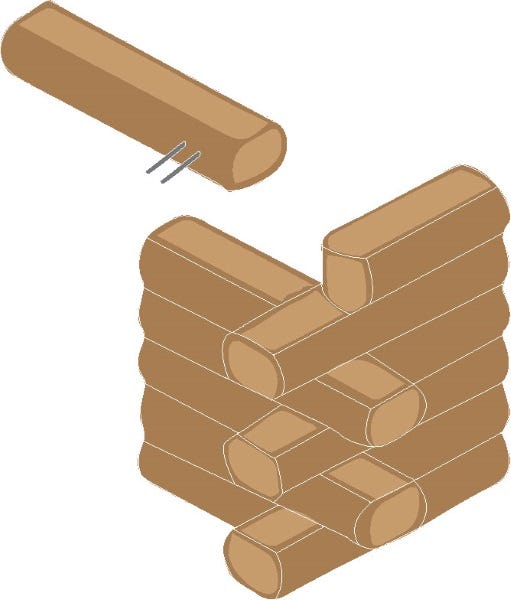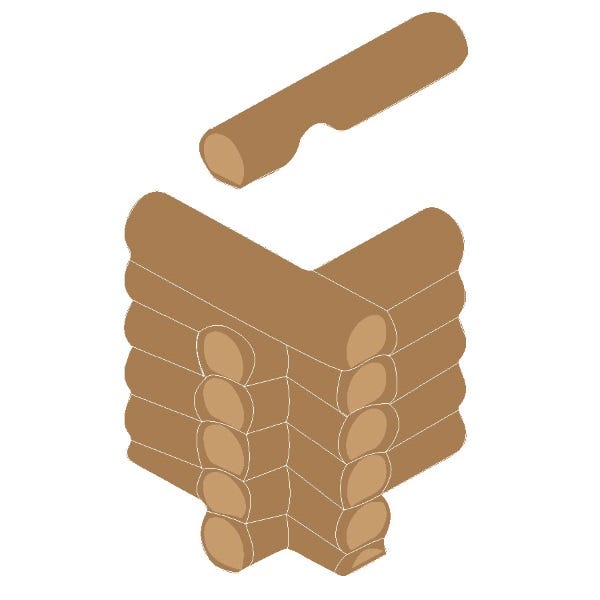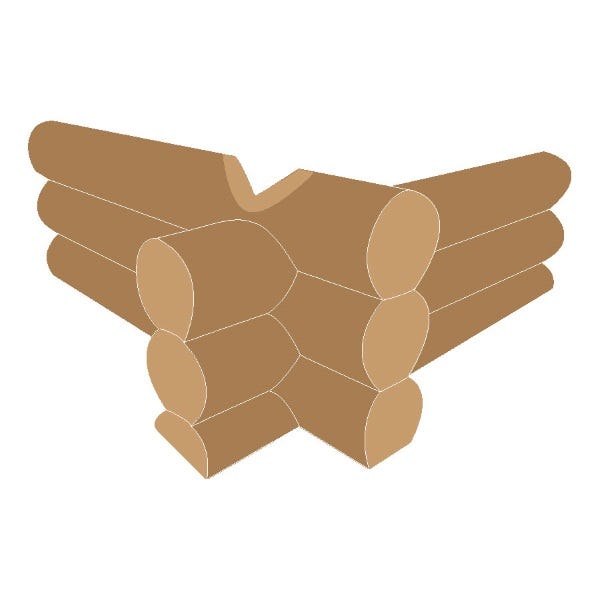How do you Notch Logs for Shelters?

There are many ways to select logs for your cabin, but a great takeaway for this blog: "A man who builds a poplar cabin will die in it." This is an old saying because poplar is renowned for rotting out quickly.
If you go with cedar trees, they have a higher acidity which acts as a natural preservative and protects against rot. Another great option is pine because they grow relatively straight.
So you have your logs selected and on the premises. Now what? Besides getting started with great hand tools, How do I notch logs for building log homes, shelters or windbreaks for livestock?

Butt and go: this is a simple joining technique that needs no scribing, you use a drill and rebar and essentially pin the logs together at the ends.

Saddle notch simple joining technique whereby a rounded notch is cut from the bottom face of a log and forms an interlocking structure when a similarly notched log is set at a right angle to it.

Shrink to fit is impossible to automate and is therefore correlated with handcrafted log homes. It is designed to fit tighter together as the logs age and shrink. Comes to us from Scandinavia.
Notching your Shelter and Life Expectancy of your Building
Consider the life expectancy of your home/shelter when deciding on your notching system. Is it a simple windbreak for livestock? The shrink and settle over time won't be a large factor when selecting your notches here, go with whatever is fastest and easiest.
If you are building a cabin or hunting shelter, however, that is when you need to consider a few things.
One of those things is selecting the right work gloves for you--check out our selection here.
The first five years of the cabin/shelter are some of the most important because during this time the logs are shrinking. They lose more diameter than length, and this means your corner joins can get loose in this period. To combat this shrinkage, you can opt for the more labor intensive shrink-to-fit notch discussed above, or you can try underscribing or overscribing.
The Notches on your Log Shelter after Five Years
What happens to your notches when the logs dry completely and settle after 5 years is that your grooves will stay tight, but your notches will get loose because of how the wood cures and the diameter shrinks. If you are chinking, you will still benefit from adjusting for this shrinkage by maintaining tight corners.
According to logbuilding.org:
"All the Weight Starts on the Notches At first, in an underscribed building, all the weight of the building is on the notches, and not much is on the grooves. As the logs dry and shrink, weight is slowly and gradually transferred from the notches and is shared with the grooves.
As some of the weight is transferred off the corners, the wood of the saddle rebounds, keeping the notches tight. In order for underscribing to work, the corner notches must withstand great weight without crushing. Notch edges must be so strong that the wood of the saddle is compressed. Compressed wood will rebound, while crushed wood is forever crushed.
Underscribing also requires that the notch slide down the saddle to a new position that is as wide as its original position, before it shrank. In order to slide, there must not be a hang-up at the top of the notch. To allow for sliding, either we leave a gap at the top of the notches, or we leave a wood seal that is so thin that it can easily crush and never cause the notch to hang up."
Do you have any experience with notching logs or building homes/shelters? We'd love to hear your feedback. Always nice to get a new perspective on things.
